The Best Products Of 2010
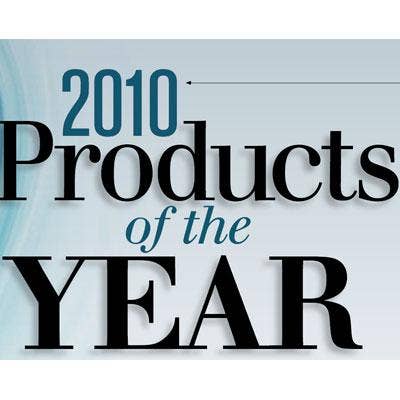
Products Of The Year
Innovation can push the technological envelope without necessarily changing the market right away. Products of the Year can change the market, without necessarily providing historic levels of innovation. So, after choosing our Tech Innovator runners-up and award winners, we sat down to choose our Products of the Year, all closely considered by the CRN Test Center.
In 2010, we saw some good technology. We saw some good products. But at the very top were a series of IT products that, in many ways, allow us to do more, do better and begin to do things weve wanted to do but had no way to do. These are the best technology products of 2010.
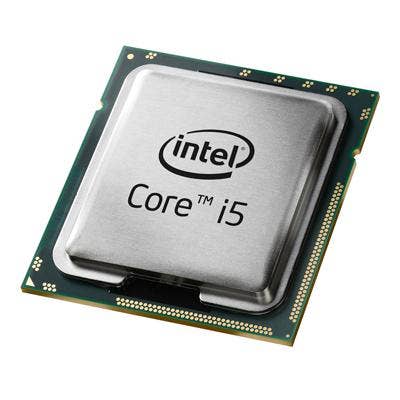
CPU: Intel Core i5
There have been many years in the IT industry where the biggest advance in processing has been a simple clock speed upgrade or branding tweak. This wasnt one of those years.
Intel began its latest bold moves into the desktop processing space late last year, when it first launched the Core i5 platform for desktops. Earlier this year, Intel followed up with a dual-core Core i5 targeted at notebooks and mobile computing.
The chip maker added functions such as Turbo Boost to its CPU offerings, as well as Hyper-Threading and HD graphics. Not only was Intel able to boost performance with the Core i5, but it did so while providing both energy efficiency and enabling longer battery life, as well as keeping thermodynamics for mobile PCs on a continually improving trajectory.
All of the Core i5s technical features combine with a pricing strategy that keeps it listed at less than most quad-core desktop CPUs, even with that comparable system performance.
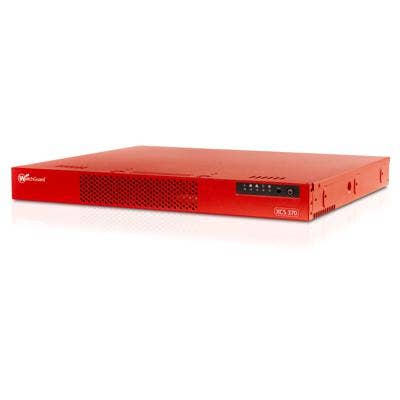
Security Appliance: Watchguard XCS 370
We continue to hear compelling arguments from both sides as to whether better security solutions can be delivered through hardware-based appliances, or whether all thats needed is software and servers already located in an organizations data center.
Of late, weve seen software-only solutions make very strong strides. But where security appliance companies can provide significant value to protect an organization, we still have room to be impressed. Watchguard has done so. Earlier this year, the CRN Test Center received for review a pair of XCS 370s, the middle product in WatchGuards three-piece XCS lineup for the SMB. The XCS 370 lists for $5,500 and is designed to handle up to 500 users; the XCS 170 ($2,475) and XCS 570 ($8,500) have a respective rated capacity of 250 users and 1,000 users. Ongoing support costs $1,200 per year. There are no per-user fees, and all include access to the companys ReputationAuthority, a cloud-based filtering system that eliminates as much as 98 percent of unwanted e-mail, according to claims. ReputationAuthority uses a combination of DNS blacklisting, analysis of IP traffic volume and behavior, and content inspection to do its job. And it does so before the content ever hits user networks. It also serves to alert deployed boxes of new threats in realtime.
The price, performance and power of the XCS 370 is significant enough to win our thumbs-up as 2010s best product in the segment of security appliances.
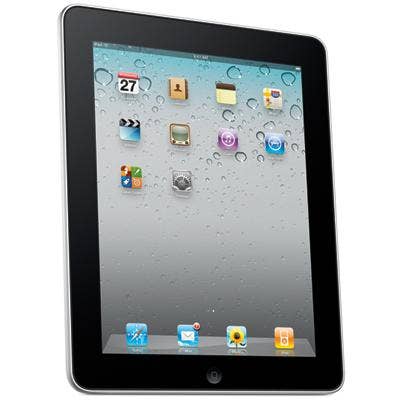
Mobile Device: Apple iPad
One phrase, as much as any, lends itself to a description of Apples iPad: game-changer.
In one fell swoop, Apple's iPad rendered competitors netbooks laughable, pushed the envelope on battery life, provided a major, new platform for software developers and did what few technology companies are capable of doing. The iPad began to change the way people compute.
A combination of the iPads brilliant display, multitouch technology, 12-hour battery life, 1.5-pound form factor, and availability of content (movies, music, books, games) has turned this nascent platform into the standard for mobile computing. Priced at $499 to start for a device with 32 GB of storage and Wi-Fi capability, Apple has more expensive versions at 64 GB of storage and others armed with 3G connectivity via AT&T.
For those who use laptops for content creation and more performance-intensive applications, the iPad will not be a replacement. But most will find that the iPad provides 80 percent or more of the accessibility to Internet-based content as a PC, but with a lighter, longer-lasting (in terms of battery life) and easier-to-handle form factor. It also is a stellar device for connecting to e-mail, contacts and calendaring with native integration with Microsoft Exchange.
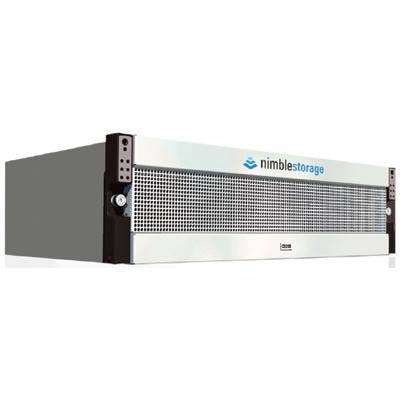
Storage: Nimble CS Series Storage Array
As the industry has reached what appears to be a transition point, from on-premise storage to a hybrid approach and, perhaps eventually, full-on cloud-based storage for enterprises, there are still important advances being made in the on-premise model.
This year, the CRN Test Center picks the Nimble CS Series Storage Array as our Product of the Year in this category because of the timely introduction of a software layer that adds value to how a storage server can move data quickly.
The CS Series includes a line of systems built around a sturdy SuperMicro 3U server chassis that incorporates a number of capabilities, including advanced performance, at a starting price of around $50,000. But the real crown jewel of this system is in its software. Dubbed Cache Accelerated Sequential Layout, or CASL, the proprietary system employs Solid State Drives to handle the random I/O traffic common to applications for SQL Server and Exchange while leaving the SATA drives to do what theyre best at: sequential reads and writes.
The Nimble CS Series box was one of the easiest weve had the pleasure of setting up and testing, thanks in part to Bonjour, Apples zero configuration service discovery protocol. The CRN Test Center would like to see more products embrace Bonjour (formerly known as Rendezvous), which makes raw devices visible on the network for administration.
Designed for midmarket companies with 200 to 2,000 employees running Microsoft applications, the Nimble Storage CS240 (as tested) lists for $99,000, including off-site replication and realtime diskless backup.
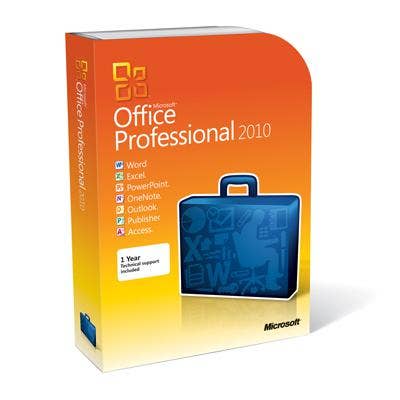
Software: Microsoft Office 2010
In many ways, one could argue that Office 2010 is just another incremental application upgrade from Microsoft. But there are key new aspects to the software giants flagship productivity product aspects that allow it to step up as the best software product of 2010.
Standing out for us is Microsofts integration of Office Live, its cloud-based/hosted extension for Office 2010. Where Googles suite of Google Docs, Google Spreadsheets and Google Presentation gained popularity with its lightweight, Web-based offering, Microsofts Office Live goes a step further. Documents, spreadsheets and PowerPoints created in Office 2010 can be saved directly to an Office Live account onlinefor collaboration or for access on another PC.
In addition, documents can be created in Office Live and then downloaded later directly to a PC. (The caveat, though, is that the PC must be running Office 2010. Earlier versions of Office, such as Office 2007, dont support this aspect of Office Live.)
Much of the robustness of Office 2010 is maintained between PC and the online version at Office Live. The result: Everything that many users like about Google Apps can now be found in Office 2010 and Office Livenotwithstanding the fact that Google Docs is free for individual users who tie their accounts to Googles cloud.
Office 2010 is a home run of functionality and flexibility that adapts to new use patterns much better than other business productivity software has in years.
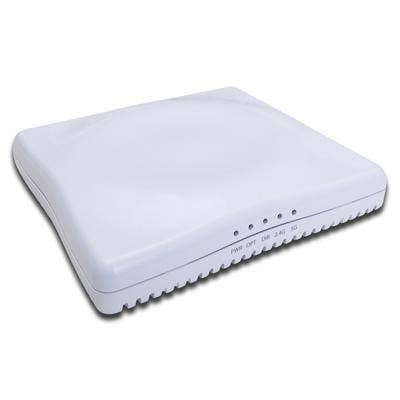
Wireless: Ruckus ZoneFlex 736
The wireless landscape hasnt yet reached a crossover point between 802.11 a/b/g and 802.11n, or WiMax, in terms of market adoption, so examining advances in this area was a little tricky this year.
Still, in this category, the CRN Test Center turns to a company that has come on strong in the wireless space over the past three years: Ruckus Wireless. This year, Ruckus delivered to market the Ruckus ZoneFlex 7363, a triumph in the war against cost and complexity that small and midsize businesses continue to fight on a day-in, day-out basis.
In the CRN Test Center lab, it took a matter of minutes to unbox the Ruckus ZoneDirector 1000, connect it to the network, integrate the dual-band ZoneFlex 7363, and dive into the browser-based administrator console over the network. The wizard-based configuration tool provides for fast deployment, activation of encryption, and a census of authorized, rogue and other network or unaffiliated access points in range of the ZoneDirector 1000.
For the Ruckus solution, a driver is the companys smart antenna technology where the ZoneFlex AP beams its signal rather than diffuses it. The result is a more precise signal, less prone to interference and better able to deliver higher bandwidth capacities. It helps to make a noticeable difference in the quality of the signal. The overall solution, then, provides higher management capability, easier installation and better quality than wed expect to see in a small or midsize enterprise solution.
On its own, VARs should be able to deliver the ZoneFlex 7363 as a fine 802.11n solution. But we believe even more value would come from combining it with the ZoneDirector 1000.
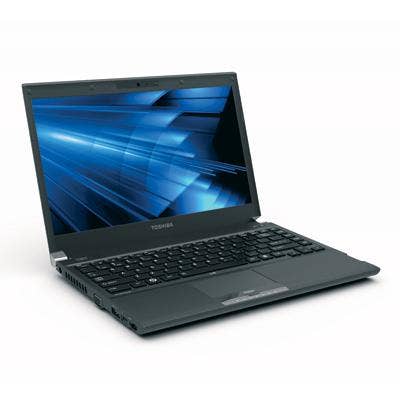
Notebook: Toshiba Portege R700
Toshiba has long been one of the top mobile PC vendors because of the quality and reliability of its products and because its hardware engineering remains top of the line.
This year, Toshiba launched its Port�g� R700 the latest in its lineup for business and came to the table ready to compete.
The system that came to the CRN Test Center lab for review was built with an Intel Core i3 M 350 processor, at 2.27GHz, and 4 GB of RAM. It was built with a massive, 500-GB (453 GB usable) hard disk drive, one of the biggest drives weve seen in a notebook.
Running Primate Labs Geekbench 2.1.1 benchmarking software, the Port�g� R700 scored 3,576very nice performance for a notebook in this class. The unit weighed 3 pounds, 3 ounces on our scale (with the battery in place). Thats about 25 percent lighter than most notebooks we review, and only slightly heavier than netbooks weve looked at lately.
The glossy, 13.3-inch LCD is bright and makes for comfortable viewing in a number of different lighting scenarios.
Running the CRN Test Centers standard battery life test, which is to disable all power-saving features and run a video from the hard drive continuously until it shuts off, the Port�g� R700 ran for 4 hours and 14 minutes the best battery performance weve seen yet in the Core i3 class.
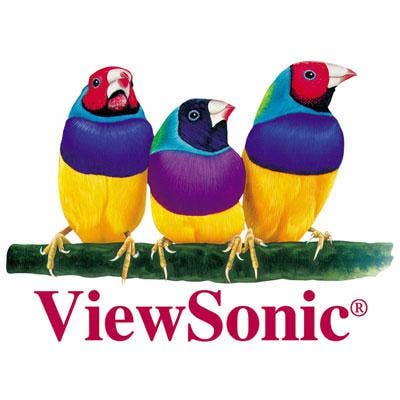
PC: ViewSonic VPC 220
ViewSonic this year produced an inviting, friendly all-in-one PC: the VPC 220.
Built with an Intel Pentium dual-core CPU E6600, 4 GB of RAM and Windows 7 Professional 64-bit, and a 22-inch ViewSonic glossy display, the system is notable for a number of reasons. First of all, ViewSonic is not normally considered in the lineup of traditional PC makers (having its heritage in the projector and display space). Second, the system uses a relatively lower-end, dual-core processor rather than one of Intels higher-end Core i-based CPUs.
But the system shines in key areas. The combined PC and display will run about $1,000 in street pricing and the out-of-the-box simplicity in setup is stunning. Built with on-board Wi-Fi support as well as an Ethernet port in the back, the system can adapt to either wired or wireless environments and be up and running, literally, in about two minutes.
The display, performance and simplicity are a model of efficiency but also of elegance, with a smooth, black, all-in-one enclosure that provides two side USB ports, an SD card slot, headphone and microphone ports and a DVD drive. The rear of the device also provides an HDMI port and a VGA port for dual-monitor implementations. On-board Webcam and soundboard beneath the display are elegant and sharp performers.
We like ViewSonics engineering, and this is a product that will enable VARs to discuss efficiency and simplicity when mapping out PC upgrades.
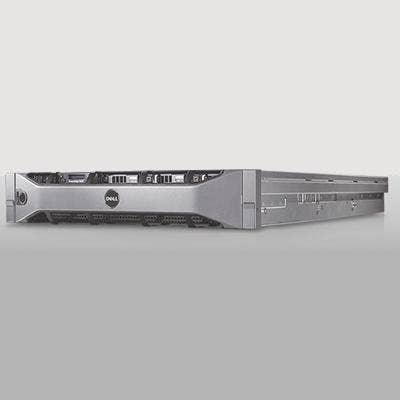
Server: Dell PowerEdge R815
The PowerEdge R815 is a four-socket server that scales up to 48 processing cores and up to 32 DIMMs. It can be configured with 1-GB, 2-GB, 4-GB and 8-GB DIMMs for a total memory capacity of up to 256 GB.
In addition, the new server can be configured with up to six 2.5-inch hot-swappable SAS, SATA or SSDs for a maximum internal storage capacity of up to 3.0 TB.
It also includes a sliding ReadyRails mounting interface for four-post racks, a static ReadyRails mounting interface for four-post and two-post racks, and optional support for a cable management arm.
What does all that add up to? Support for massive virtualization. With minimal fanfare, Dell over the summer unveiled the PowerEdge R815, a 48-core 2U server touting four Opteron processors (with 12 cores each) and another four Gigabit Ethernet adapters to service them.
Benchmark performance delivered by the new Dell server was impressive, rivaling that of a specialty system evaluated recently by the CRN Test Center that was engineered from the ground up for maximum I/Os per second.
Where the R815 really excelled was in transaction processing. To gauge I/O transactions and transfer rates (MBps), testers used Intels IOmeter and 100 percent random reads of 4-KB blocks. When operating on the R815 itself, IOmeter reported a respectable 9,957 I/Os per second and a transfer rate of 37.5 MBps. The unit did almost as well with sequential writes, delivering a peak of about 9,080 I/Os per second and 35.5 MBps.
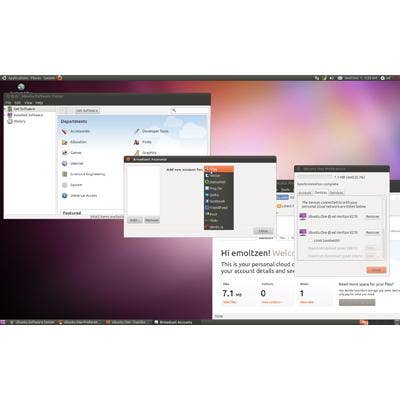
Open Source: Ubuntu 10.10 maverick meerkat
Running the latest release from the Ubuntu community this year was like going down a checklist of key functionalities: Cloud computing? With Ubuntu One, which is integrated with version 10.10 of the Linux OS, its possible to establish a hosted storage account as well as buy and store music. Its dead simple to get going, free to get started and provides a path toward greater quantities of storage for a fee. Check.
Social networking? Included in Ubuntu 10.10 is a Broadcast Accounts option that allows single-interface management of Twitter, Facebook, Buzz, Status.net and more social networking accounts and provides it as a quick, navigational option for power social networking users. Check.
Fast boot time? Canonical, the parent organization for the Ubuntu Community, has made instant on an important goal for the free OS. With Ubuntu 10.10, systems built onto an industry-standard PC with a hard disk drive for booting can boot-to-ready in less than 15 seconds, or about half the time of Windows 7 on the same machine and certainly much faster than Windows XP.
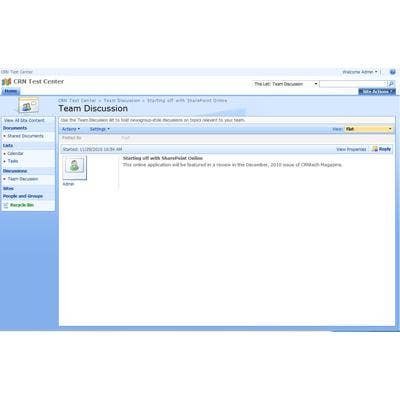
Cloud Application: Microsoft Online Services SharePoint
Microsoft makes no bones about the fact that configuration of SharePoint can be highly complex. But by now providing SharePoint as part of its Microsoft Online Services lineup, it has gone to great lengths to make it as turnkey an offering as possible.
While SharePoint 2010 should really be the province of midsize to large enterprises, Microsoft has done a stellar job of integrating elements of SharePoints functionality into its OfficeLive product. The interface, ability to share and collaborate on basic office documents, conduct instant messaging conversations and more do what SharePoint sets out to do: enable collaboration.
The hosted application, as part of Microsoft Online Services, can be integrated with online versions of Office Communications Server, Exchange and Live Meeting. Administrators have full user control via a robust management console. A half-hour after establishing an account (the trial version we used supported 20 licenses), its possible to have an enterprise sharing tasks, calendar information, files, instant messages and threaded conversations. Microsoft estimates the cost to an enterprise at $5.25 per user, per month for hosted SharePoint.
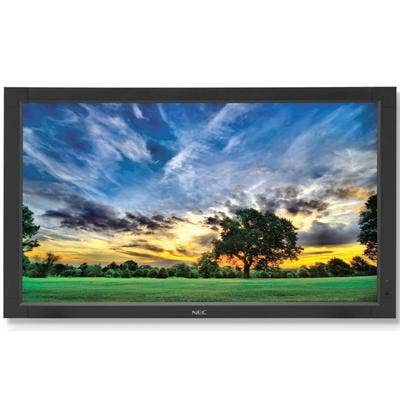
Display/Signage: NEC S521 52-inch Display
NEC Display Solutions of Americas S521 adds a 52-inch model to its line of LCD monitors aimed at always-on applications.
The S-series also includes 40- and 46-inch models. Its designed to handle numerous input scenarios and includes features to extend component life and simplify remote control and maintenance. Street pricing for the S521 starts at $2,699.
The on-screen display controls numerous settings, including border color; OSD transparency, location and orientation; and the selection of which screen to display the OSD when two or more screens are tiled. As many as 100 monitors can be tiled in a 10 x 10 arrayall controlled from a single OSD. One or many S-series monitors also can be controlled via RS-232 or Ethernet port, both included. Other input ports include VGA, DVI, HDMI, DisplayPort, S-Video, RGB (BNC), DVD-HD component, composite and three for stereo audio.
Digital signage networks have been sprouting up for years, but unless they can reach a certain threshold, operators have had trouble signing large advertisers. The NEC S521 puts together all of the pieces that a VAR can use to deliver an incredibly valuable digital signage solutioneither as part of a tiled solution or even as a stand-alone.
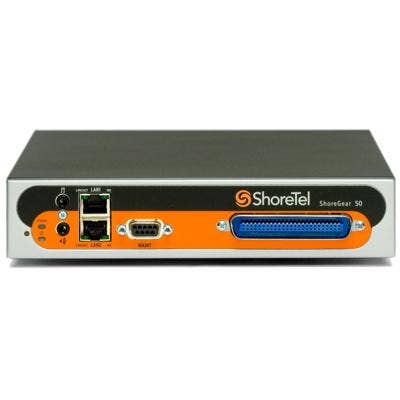
VoIP: ShoreTel ShoreGear-50
This year, the CRN Test Center examined a number of stellar entries into the VoIP arena from a number of solid and reliable vendors. But at the end of the year, looking back, the ShoreTel ShoreGear-50 gets our nod for VoIP Product of the Year.
By separating call control from the user directory, ShoreTel differs from most telecom providers, which deploy all functions in a central unit. According to the company, this simplifies and lowers the cost of expansion and eliminates any single point of call control failure.
Its ShoreWare Director management software handles all system administration and is accessed through a browser. This easily navigable software made quick work of the initial setup and made additional features easy to find and configure. Excellent client desktop software is loaded by pointing a browser to the server. There, too, is full Outlook integration, chat, call transfer with text notes, peer presence information and unified messaging capabilities.
The ShoreGear-50 lists for $1,999 and can handle as many as 50 IP phones plus two analog extensions and four loop-start trunks. ShoreTel IP phones range in price from $200 to $599. For its low price, integration with Microsoft solutions and flexible deployment and administration, the CRN Test Center places it squarely on our list.
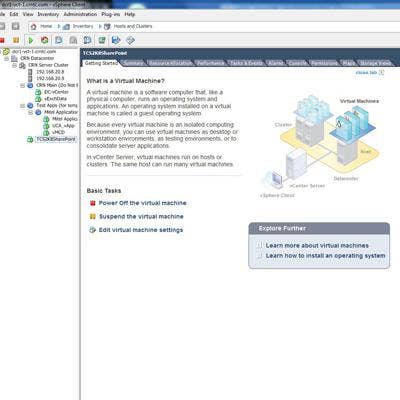
Virtualization: VMware VCenter Server 4.1 and VMware vSphere 4.1
VMware released vSphere 4.1, its cloud operating system, this year to focus on making virtualization, and its management and deployment, more efficient, and provide greater control and flexibility for enterprises.
Why are these advances such a big deal? For example, vSphere 4.1 provides nice memory compression technology, which reduces memory bottlenecks and makes stuff just run faster. In terms of scalabilitywhich is huge for cloud computing deployments, be they hosted or privatevSphere 4.1 is capable of scaling to as many as 10,000 virtual machines at a rate of 3,000 per cluster. Those are mind-numbing numbers and certainly raise the bar.
VMware in 2010 simply delivered on what the marketplace needed in virtualization technology, and for that we give it Product of the Year kudos.
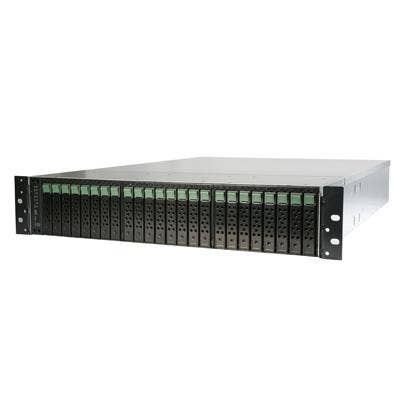
Overall Product Of The Year: ION SR-71 SpeedServer
For CRNs readership, one product clearly stood out as the best of the year: the SR-71 SpeedServer from ION Computer.
The SR-71 turned out to be one of the highest-performing systems weve examined in more than 20 years of product reviews. The system we examined was built with two dozen, 48-GB SSD 2.5-inch drives, mounted in front-accessible hot-swap bays, configured in three RAID arrays of eight drives each. They were managed by three discrete RAID controllers.
The SR-71 consumes remarkably little power. When running with a moderate load, the SpeedServer consumed just 191 watts.
Credited with the units frugal power consumption are, of course, its Solid State Drives. Theyre also responsible for the SpeedServers great performance.
Fully configured, this system could run north of $30,000, though ION says pricing could ultimately be left to channel partners.
We choose this as overall Product of the Year not just because its a stellar solution available to just about anyone in the channel, but because we also believe ION this year stands as an example of what is truly possible for solution providers using best-in-breed, industry-standard technology.